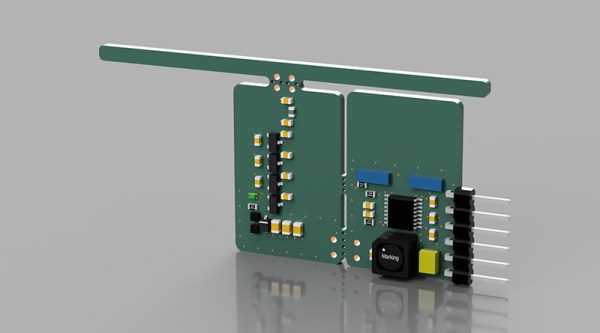Apple’s Vision Pro augmented reality goggles made a big splash in the news this week, and try as we might to resist the urge to dunk on them, early adopters spotted in the wild are making it way too easy. Granted, we’re not sure how many of these people are actually early adopters as opposed to paid influencers, but there was still quite a bit of silliness to be had, most of it on X/Twitter. We’d love to say that peak idiocy was achieved by those who showed themselves behind the wheels of their Teslas while wearing their goggles, with one aiming for an early adopter perfecta, but alas, most of these stories appear to be at least partially contrived. Some people were spotted doing their best to get themselves killed, others were content to just look foolish, especially since we’ve heard that the virtual keyboard is currently too slow for anything but hunt-and-peck typing, which Casey Niestat seemed to confirm with his field testing. After seeing all this, we’re still unsure why someone would strap $4,000 worth of peripheral-vision-restricting and easily fenced hardware to their heads, but hey — different strokes. And for those of you wondering why these things are so expensive, we’ve got you covered.
Power Harvesting7 Articles
Vampire Charger Is A Rugged Anything-to-5VDC Converter
USB sockets providing 5 VDC are so ubiquitous as a power source that just about any piece of modern portable technology can use them to run or charge. USB power is so common, in fact, that it’s easy to take for granted. But in an emergency or in the wake of a disaster, a working cell phone or GPS can be a life saver and it would be wise not to count on the availability of a clean, reliable USB power supply.
That’s where the Vampire Charger by [Matteo Borri] and [Lisa Rein] comes in. It is a piece of hardware focused on turning just about any source or power one might possibly have access to into a reliable source of 5 VDC for anything that can plug in by USB. This is much more than a DC-DC converter with a wide input range; when they say it is made to accept just about anything as an input, they mean it. Found a working power source but don’t know what voltage it is? Don’t know which wire is positive and which is negative? Don’t even know whether it’s AC or DC? Just hook up the alligator clips and let the Vampire Charger figure it out; when the light is green, the power’s clean.
The Vampire Charger was recently selected to move on to the final round of The Hackaday Prize, netting $1000 cash in the process. The next challenge (which will have another twenty finalists receiving $1000 each) is the Human-Computer Interface challenge. All you need to enter is an idea and some documentation, so dust off that project that’s been waiting for an opportunity, because here it is.
Energy Harvesting Design Doesn’t Need Sleep
Every scrap of power is precious when it comes to power harvesting, and working with such designs usually means getting cozy with a microcontroller’s low-power tricks and sleep modes. But in the case of the Ultra Low Power Energy Harvester design by [bobricius], the attached microcontroller doesn’t need to worry about managing power at all — as long as it can finish its job fast enough.
The idea is to use solar energy to fill a capacitor, then turn on the microcontroller and let it run normally until the power runs out. As a result, a microcontroller may only have a runtime in the range of dozens of microseconds, but that’s just fine if it’s enough time to, for example, read a sensor and transmit a packet. In early tests, [bobricius] was able to reliably transmit a 16-bit value wirelessly every 30 minutes using a small array of photodiodes as the power supply. That’s the other interesting thing; [bobricius] uses an array of BPW34 photodiodes to gather solar power. The datasheet describes them as silicon photodiodes, but they can be effectively used as tiny plastic-enclosed solar cells. They are readily available and can be arranged in a variety of configurations, while also being fairly durable.
Charging a capacitor then running a load for a short amount of time is one of the simplest ways to manage solar energy, and it requires no unusual components or fancy charge controllers. As long as the load doesn’t mind a short runtime, it can be an effective way to turn even indoor light into a figuratively free power source.
SPINES Design Makes For Modular Energy Harvesting
The SPINES (Self-Powered IoT Node for Environmental Sensing) Mote is a wireless IoT environmental sensor, but don’t let the neatly packed single PCB fool you into thinking it’s not hackable. [Macro Yau] specifically designed SPINES to be highly modular in order to make designing an energy harvesting sensor node an easier task. The way [Macro] sees it, there are two big hurdles to development: one is the energy harvesting itself, and the other is the software required to manage the use of every precious joule of that harvested energy.
[Macro] designed the single board SPINES Mote in a way that the energy harvesting portion can be used independently, and easily integrated into other designs. In addition, an Arduino library is being developed to make it easy for the power management to be done behind the scenes, allowing a developer to concentrate on the application itself. A solar-powered wireless sensor node is one thing, but helping people get their ideas up and running faster in the process is wonderful to see.
Harvesting Power From Microwave Popcorn
One of the challenges in this year’s Hackaday Prize is Power Harvesting where we’re asking everybody to create something that harvests energy from something. It could be solar, it could be harvesting energy from a falling weight. If you’d like to give a TED talk, it could be harvesting energy from sound waves. It could be harvesting energy from ambient RF, and where’s the best place to harvest ambient RF? That’s right, next to a microwave.
[Jurist]’s entry for the Power Harvesting Challenge in this year’s Hackaday Prize is a simple device that mounts to the front door of a microwave. The design uses a simple PCB antenna to harvest energy, an LTC3108 DC/DC converter that was lying around in a junk drawer, and a bunch of passives to suck down some photons escaping from a microwave. The idea for this whole device is to use the harvested power to send off a message over Bluetooth (or whatever) when the microwave is done. Really, though, this falls right into the ‘because I can’ category of weird builds.
So, does this power harvesting PCB work? The initial tests were iffy because there was no trimming of the antenna and no tuning of the circuit. However, after [Jurist] connected the board to a voltmeter and cooked some beans, he was seeing an entire volt across the circuit. It’s a start, and the beginning of a truly ‘smart’ microwave add-on. Really, though, it’s just cool to see a circuit harvest power from a leaking Faraday cage.
Friday Hack Chat: All About The Hackaday Prize
Right now we’re neck deep in the Hackaday Prize. What’s the Hackaday Prize? It’s the Academy Awards of hardware creation, or at least that’s what we’re calling it until we get a cease and desist from the Academy of Motion Picture Arts and Sciences.
 Already we’ve seen over eight hundred entries in the Hackaday Prize, and there are still months to go. We’re already through the Open Hardware Design Challenge, and twenty fantastic projects from that are moving onto the final round. Yesterday, we announced the winners of the Robotics Module challenge, and again we were blown away. These are the greatest bits of hardware anywhere, and we couldn’t have imagined anything more awesome.
Already we’ve seen over eight hundred entries in the Hackaday Prize, and there are still months to go. We’re already through the Open Hardware Design Challenge, and twenty fantastic projects from that are moving onto the final round. Yesterday, we announced the winners of the Robotics Module challenge, and again we were blown away. These are the greatest bits of hardware anywhere, and we couldn’t have imagined anything more awesome.
For this week’s Hack Chat, we’re going to be talking all about The Hackaday Prize. This is your chance to be a hardware hero and finally get some recognition for what you’ve been working on. Right now, we’re in the Power Harvesting Challenge in this year’s Hackaday Prize, and we want to see what you can come up with that will get energy from solar, thermal, wind, or random electromagnetic energy. This is your time to shine, and we can’t wait to see what you come up with.
Of course, you might have a few questions on what it takes to make a successful Hackaday Prize entry. For this week’s Hack Chat, we’re going to sit down with [Stephen Tranovich], the person coordinating this year’s Prize, to see what makes a successful entry. This is your chance to find out what it takes to become the next great hardware hacker, and it’s all going down this Friday in the Hack Chat.
Some of the things we’ll be talking about in this week’s Hack Chat:
- What makes a winning entry?
- How can you get publicity for your project?
- Want to bounce your project ideas off the community?
- What’s the story behind the seed funding confusion from this year?
You are, of course, encouraged to add your own questions to the discussion. You can do that by leaving a comment on the Hack Chat Event Page and we’ll put that in the queue for the Hack Chat discussion.
Our Hack Chats are live community events on the Hackaday.io Hack Chat group messaging. This week is just like any other, and we’ll be gathering ’round our video terminals at noon, Pacific, on Friday, June 15th. Here’s a clock counting down the time until the Hack Chat starts.
Click that speech bubble to the right, and you’ll be taken directly to the Hack Chat group on Hackaday.io.
You don’t have to wait until Friday; join whenever you want and you can see what the community is talking about.
Power Harvesting Challenge: Scavenge Some Power, Win Prizes
It’s a brand new day as the Power Harvesting Challenge begins. This is the newest part of the 2018 Hackaday Prize and we’re looking for 20 entries who will each receive $1,000 and move onto the finals to compete for the top five spots, scoring cash prizes of $50k, $25k, $15k, $10k, and $5k.
Put simply, Power Harvesting is anything you can do that will pull some of the energy you need from a source other than wall-power or traditional battery tech. The most obvious power harvesting technologies are solar and wind. Ditch the battery in your doorbell for a solar panel, or turn your time-lapse camera rig into one that tops its battery with a tiny wind turbine. On the other end of the spectrum you could go nuts with chemistry and develop your own take on harvesting power from saltwater, or sip off the ambient RF waves all around us.
Every Idea Matters
We live in an amazing time as chip manufacturers have squeezed every low power trick out of their silicon dies that they possibly can. The Power Harvesting Challenge is the complement to those achievements: can we now squeeze as much energy out of non-traditional sources as possible to further reduce our energy footprints?
Continue reading “Power Harvesting Challenge: Scavenge Some Power, Win Prizes”





















